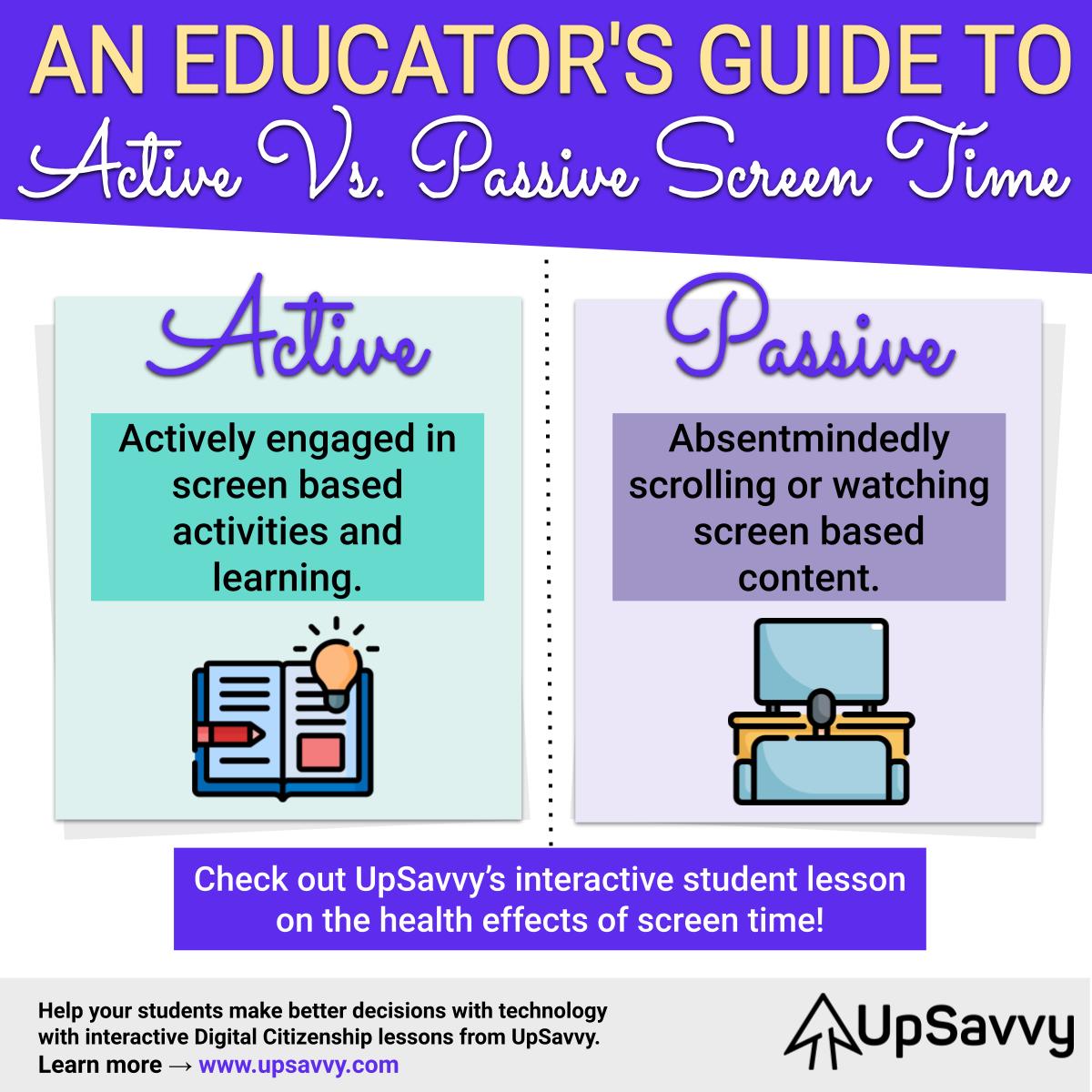
Did you know that teenagers have about 7.5 hours of screen time each day? Screen time can have significant effects on our health and digital well-being. It is important to know the difference between active and passive screen time and how these two contrasting ways of being online can affect our productivity, creativity, memory, academic performance, and consistent sleep patterns. It is important to be deliberate and methodical about your daily screen time use and ensure that the majority of your time in front of a screen is spent in active and meaningful ways.
Active Screen Time
Active screen time is the purposeful intention to actively engage in screen based activities and learning. This could look like typing a creative writing story, creating a new graphic design, or bending our mind to think in new ways. Active screen time is proven to enhance creativity, boost energy, and lower stress. It makes individuals feel good to tackle new concepts, expand skill sets, and create engaging and entertaining content for others to enjoy.
Passive Screen Time
Passive screen time is the absent minded scrolling or watching of screen based content. This could look like excessive hours watching YouTube videos, streaming services, or social media posts. Passive screen time has negative effects on our memory recall, academic performance, sleep routines, time management, and overall health. Be sure to recognize when you have fallen into passive screen time use and make adjustments, or go offline, to maintain a more healthy balance of screen time use.
Be sure to check out UpSavvy’s Digital Well-Being lesson on the health effects of screen time! www.upsavvy.com